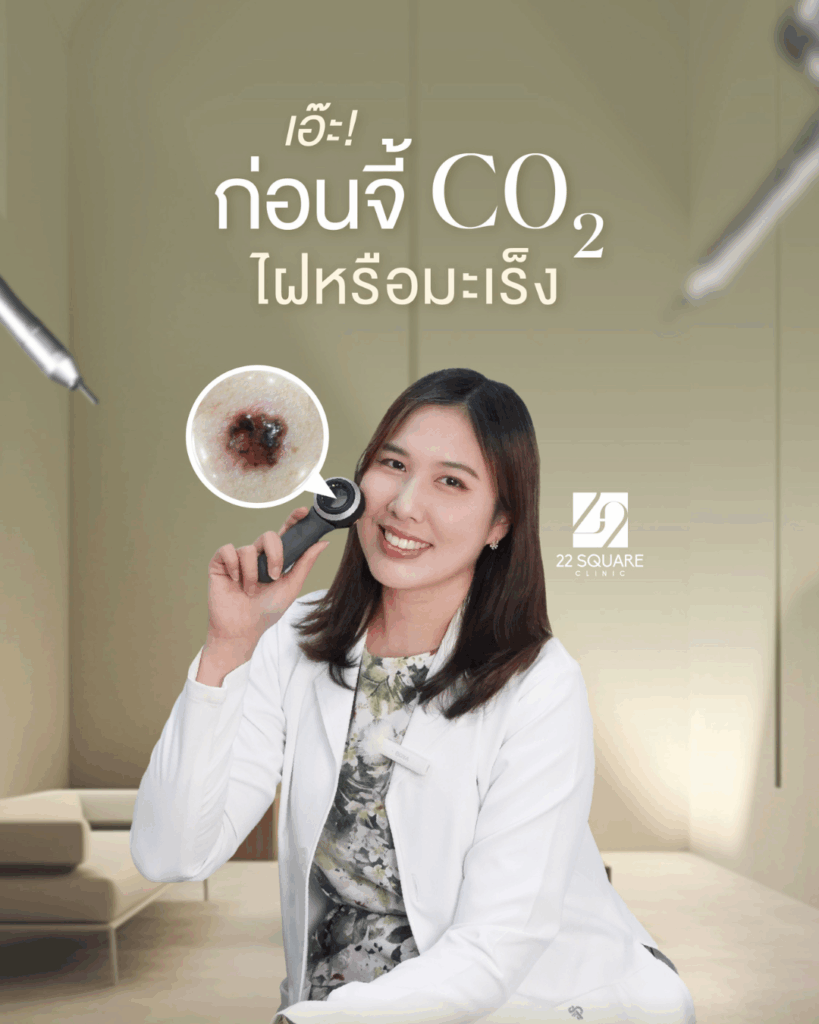Why You Should Not Remove a Mole Immediately with CO₂ Laser
A CO₂ laser works by emitting focused light energy (wavelength 10,600 nm) that vaporizes skin tissue precisely and effectively.
It’s an excellent tool for removing benign growths such as moles, warts, or sebaceous hyperplasia.
However, there’s one critical limitation:
Laser destroys the entire tissue — leaving nothing behind for pathological examination.
If the lesion turns out to be skin cancer, we lose the opportunity to confirm the diagnosis and assess its severity.
This can lead to delayed treatment and cancer progression beneath the surface.
That’s why Dr. Jib always emphasizes:
“Before treating anything, we must first know what we’re treating.”

